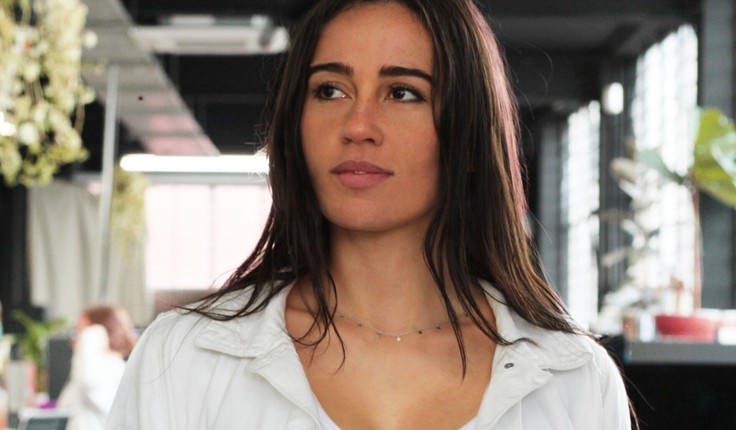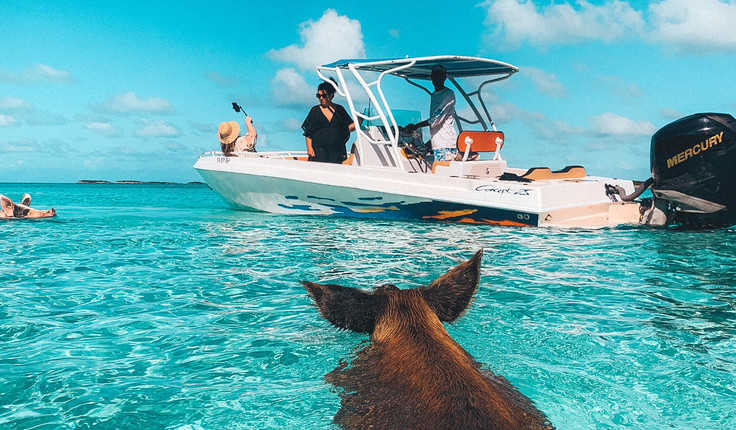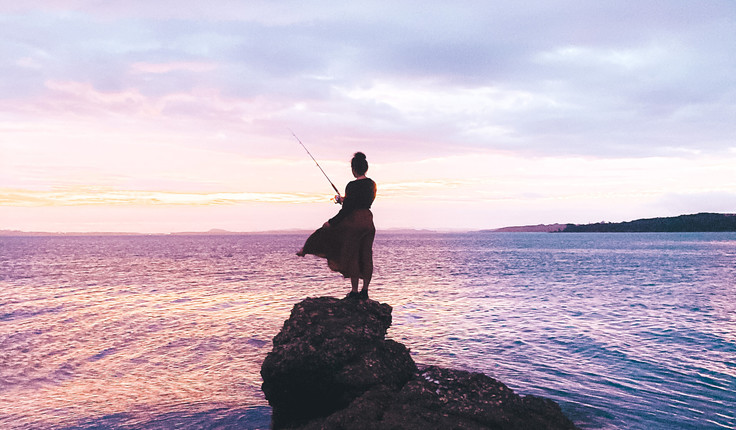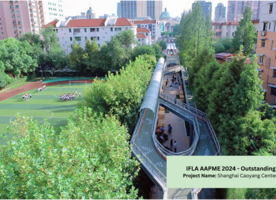News
A passion for equality
Posted 11 02 2021
in News

Landscape Architecture Aotearoa
Claudia Boyo is a landscape architect at Resilio Studio in Auckland. She’s a masters graduate from Victoria University in Wellington.
Her passion is working with Iwi to revive, emphasise or embellish Māori culture and native ecologies in a significant place or area, as well as working with schools to create landscapes that incorporate culture, ecology, school curriculum and play to produce multifunctional spaces.
LAA: You went travelling after you got your masters. Why didn't you get a job straight away?
CB: I had wanted to go travelling straight out of high school but my mum had asked me to get a degree behind me before I did any travel so I decided to do that first. I was lucky enough to go on a trip in my fourth year to Europe with 50 other architects. The trip was designed to be a paper that exposed architects to visit a range of different European landscapes and buildings and learn about the architect and the area. We visited France, Spain and Portugal.
The trip was amazing and really opened up my mind in terms of what a landscape can do and how it can function. This only strengthened my desire to go travelling after uni, not only to have a break but to also broaden my horizons further. I travelled through Europe, Asia, America and finished in Australia. The mix of cultures, landscapes, different urban environments and cultures, I like to think, enabled me to look at design in a different way and embrace more of a hybrid approach by integrating traditional Māori concepts with traditional European and Asian methods.
LAA: What are you doing now?
CB: Within my role at Resilio Studio, I am working in two realms of Landscape Architecture: the school realm and the parks/playgrounds one which involves working closely with Māori.
I am working on a range of schools all over the country, from small courtyard spaces to masterplans, creating spaces that embrace native ecology, Te Ao Māori concepts and principles, and the create spaces where the children's imaginations drive the use of the spaces, not the equipment or space itself. It is extremely exciting and rewarding work and I hope with this work we can start to change the way I'm which school grounds function and look.
LAA: Why landscape architecture?
CB: At Victoria University, when you enter the architecture programme, you get to trial architecture, building science, interior architecture and landscape architecture in your first year. Out of the five disciplines, it was clear that landscape architecture had the ability to have the most impact on people, native ecosystems, cities and urban environments and cultures all in one. Its ability to embrace the past while looking forward is so powerful. I knew that I wanted to be involved in projects that had maximum impact on areas, communities and regions and that also had the ability to change the face of New Zealand's environments, culture and people so it was the perfect fit.
LAA: What drives your work?
CB: In my school work its equality. Why should some people have a greater head start in life than others? I want the school grounds I design in low decile schools to expose children to different arts and culture, ecosystems, learning opportunities and sporting ones so that no child that wants to learn or has potential loses out because of their personal circumstances.
In my work with Iwi and in parks and reserves its quality of life and wanting to share the beauty and concepts of our native culture. Having just moved to Waiheke Island, I can see, now more than ever, the difference in our quality of life in cities compared to less urbanised areas. Yes, we can efficiently get to places but there is less beauty, less peace, a lesser connection with nature and less to do. I believe that landscape architecture has the ability to change this within urbanised areas, offering moments of respite and opportunities to interact with nature.
The need to preserve and enhance the presence of Māori in our urban and natural environments is also a big driver for me.
Our culture is what sets us apart from anywhere else in the world and most New Zealanders know very little about it. This fuels my passion for working with iwi and creating landscapes that educate people, share the culture on both a visual and conceptual level and create spaces for Māori to do this themselves.


LAA: What do you bring to the profession?
CB: A multicultural lens and a creative flare. My father is half german, half African and I spent a lot of my childhood travelling across the world to see different members of my family. This exposed me to a range of different cultures, architecture, spaces and landscape which allowed me to understand the different way people and civilisations have done things based on geographical location and social, economical and political factors.
My mother is very creative and artsy. She has been a florist, graphic designer and she is an artist. She fuelled my passion for creating through art classes, arts and craft sessions at home and trips to the local art gallery. Being exposed to so many different mediums of art really opened up my mind and I think has enabled me to think outside the box.
I use this when I visit a site for the first time. Once I have had a good look at the space I then imagine the most exciting space possible, what can it provide people in terms of beauty and activities? Where do you want people to gather and disperse? How can I tell the historic stories of the space while embracing the future programmatic desire for it? And I imagine all of this visually in my head and that's my starting point. The creative learning I did as a small child has enabled me to imagine the potential of spaces.
LAA: We recently featured your Kimi Ora project, which centred around outdoor learning with a Māori/Pasifika focus. You said then you wanted to dedicate your career to rolling out a similar initiative in low decile schools around the country. Tell us a bit more about that passion?
CB: Absolutely. As I mentioned above a big driver for me is equality in New Zealand and I think one of the best places to tackle this is at an educational youth level, where this time in peoples’ lives shapes a lot of their future, who they are and what they believe they can deserve out of life and what they can personally achieve. I want every kid in New Zealand to be given the same basic opportunities to excel in something and I think this can be achieved through the careful and pragmatic design of school grounds. People generally only feel as good as their surroundings. A child’s day to day surroundings generally sets the standard for quality of life they strive for as they grow and as children spend 70% of their early life in school it makes sense to start there.
The experience of designing Kimi Ora completely reinforced that I want to dedicate my career to trying to roll out a school ground specific initiative out across New Zealand for low decile schools in low socioeconomic areas.
The problem with the process at the moment is a lot of time and energy is dedicated to finding and applying for lots of small grants of money to collect enough to even design a new school landscape. This often makes the whole process infeasible for teachers and principals who are often the ones driving the project.
I would like to start a fund that takes out the hard work and lengthy wait time out of the funding process and is effective in targeting schools in need. I would like to set up an initiative where companies or organisations can donate resources (such as materials or trees et) or money to the design and build of school landscapes. Low decile schools then apply to the fund explaining why they feel their school is eligible for a redesign and build. This reduces time and energy spent on sourcing funding from different avenues, leaving those designers, teachers and principals with more time to focus on the actual components of the design.
It also connects the most in-need schools with the funding while providing companies and potentially individuals who want to contribute to education and equality in New Zealand, the ability to do so. I am in the process of looking at how to set this up and hope to make good progress this year with it.
LAA: You have a side business - Floralessence. How did that come about?
CB: I have always loved creating and decorating my room with floral/nature art and bouquets. Last year I had a number of friends and family ask me to create pieces for their places so I thought I would see if I could make it work as a small side business.
I absolutely love it, it doesn't feel like work and the process of making wreaths or bouquets is very therapeutic and quite different to what I do in my day job so its a nice change. I have my first three weddings at the start of this year and have also designed a large hanging installation in Al Volos Pizzeria on Mt Eden road, so it seems the word is spreading which is really exciting. My website for anyone interested is floralessence.nz
LAA: Any goals for 2021?
CB: Yes far too many for me to really get through but the main ones are to start Te Reo lessons, start up the New Zealand School Landscape Initiative, develop floral essence as a company, hopefully buy my first property and spend more time exploring New Zealand with my family, friends and partner.
Share

10 Dec
Proposed replacement of the RMA: Planning Bill and Natural Environment Bill

A message from the Environmental Legislation Working Group
On Tuesday this week, the Government released proposed bills to replace the Resource Management Act 1991. Reform of our planning …
03 Dec
Newly Registered Landscape Architects 2025

Celebrating professional achievement across Aotearoa The 2025 Registration process is now nearing completion, and we are delighted to acknowledge the …
02 Dec
2025 IFLA APR Newsletter

November Edition
2025 IFLA APR Newsletter: November Edition November brings exciting updates from across the region. We’re welcoming the new IFLA APR …
Events calendar
Full 2025 calendar